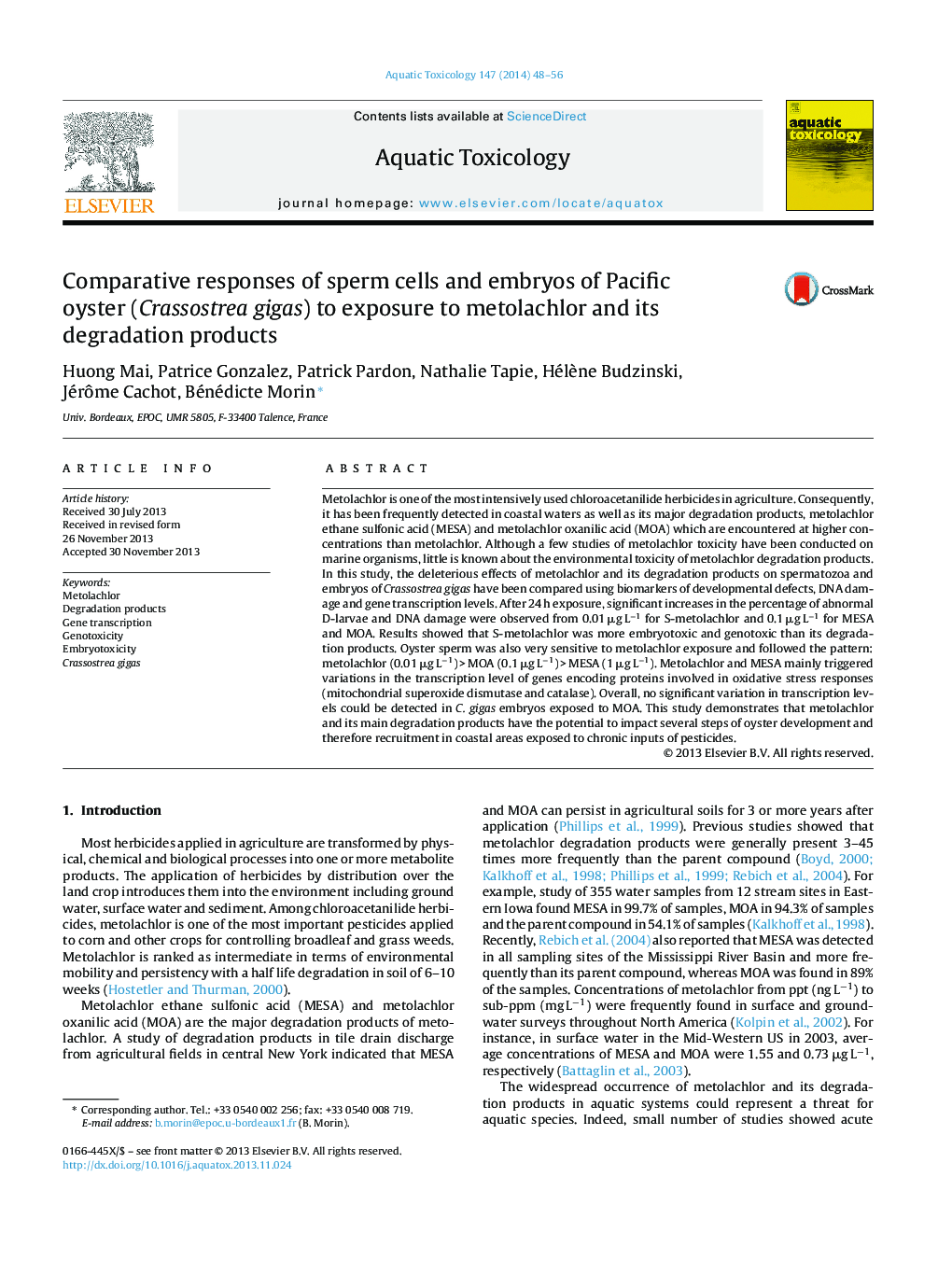| کد مقاله | کد نشریه | سال انتشار | مقاله انگلیسی | نسخه تمام متن |
|---|---|---|---|---|
| 4529401 | 1625958 | 2014 | 9 صفحه PDF | دانلود رایگان |

• Pacific oyster sperm cells or embryos were exposed to metolachlor and its metabolites.
• Oyster embryo exposure to pesticide induces developmental defects and DNA damage.
• Metolachlor and MESA modulate expression of oxidative stress genes in oyster embryos.
• Metolachlor is more toxic than its metabolites to oyster embryos.
• Environmental concentrations of pesticides may impair oyster recruitment.
Metolachlor is one of the most intensively used chloroacetanilide herbicides in agriculture. Consequently, it has been frequently detected in coastal waters as well as its major degradation products, metolachlor ethane sulfonic acid (MESA) and metolachlor oxanilic acid (MOA) which are encountered at higher concentrations than metolachlor. Although a few studies of metolachlor toxicity have been conducted on marine organisms, little is known about the environmental toxicity of metolachlor degradation products. In this study, the deleterious effects of metolachlor and its degradation products on spermatozoa and embryos of Crassostrea gigas have been compared using biomarkers of developmental defects, DNA damage and gene transcription levels. After 24 h exposure, significant increases in the percentage of abnormal D-larvae and DNA damage were observed from 0.01 μg L−1 for S-metolachlor and 0.1 μg L−1 for MESA and MOA. Results showed that S-metolachlor was more embryotoxic and genotoxic than its degradation products. Oyster sperm was also very sensitive to metolachlor exposure and followed the pattern: metolachlor (0.01 μg L−1) > MOA (0.1 μg L−1) > MESA (1 μg L−1). Metolachlor and MESA mainly triggered variations in the transcription level of genes encoding proteins involved in oxidative stress responses (mitochondrial superoxide dismutase and catalase). Overall, no significant variation in transcription levels could be detected in C. gigas embryos exposed to MOA. This study demonstrates that metolachlor and its main degradation products have the potential to impact several steps of oyster development and therefore recruitment in coastal areas exposed to chronic inputs of pesticides.
Journal: Aquatic Toxicology - Volume 147, February 2014, Pages 48–56